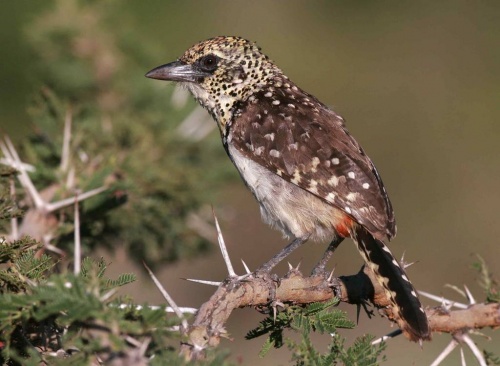
Trachyphonus darnaudii
TAXONOMY
Trachyphonus darnaudii Cretzschmar, 1826. Four subspecies.
OTHER COMMON NAMES
English: Usambiro barbet; French: Barbican d’Arnaud; German:
Ohrfleck-Bartvogel; Spanish: Barbudo de D’Arnaud.
PHYSICAL CHARACTERISTICS
6.7–7.5 in (17–19 cm); 0.9–1.8 oz (25–50 g). A boldly spotted
bird. Upperparts are blackish brown to brownish with white
speckles; underparts are black speckled and there is a black
patch on the lower throat and a black-and-white spotted band
across the breast. Forehead and crown are yellow or orange
and yellow speckled with black (one subspecies has black forehead
and crown).
DISTRIBUTION
East Africa, including southeastern Sudan, northeastern
Uganda, Kenya, northern Tanzania.
HABITAT
Dry thornbush and bushy savanna, abandoned Masai camps,
open woodland.
BEHAVIOR
Found mostly in pairs, sometimes in groups of 4–5; often
perches inconspicuously low down on a bush or stump. Erects
crest feathers, bobs head, and flirts or sways tail during duetting
calls.
FEEDING ECOLOGY AND DIET
Eats many ants, termites and their eggs, grasshoppers and
other insects, some caught in flight, others picked from leaves
or the ground. Also takes many berries and small fruits and
seeds.
REPRODUCTIVE BIOLOGY
Song in duet from male and female, notes differing but not
consistent within either sex; typically a series of up-down notes
followed by two or three high notes, such as “witch-ee-tee-tata-
ta” or “ker-ka-tee-tootle,” in synchronized pattern. Pairs
usually use existing cavity in tree, not excavating their own;
2–4 eggs incubated probably by the parent birds, but perhaps
assisted by helpers. The breeding pair feeds the chicks almost
or entirely unassisted by helpers within a small group. Young
beg for food from parents for some days after fledging; they
may become helpers in subsequent breeding attempts in the
next breeding season.
CONSERVATION STATUS
Widespread and locally common; not threatened.
SIGNIFICANCE TO HUMANS
Little known to most people but frequent around old bush
camps, Masai camps, and some tourist lodges.
Photo Gallery of - D’Arnaud’s barbet
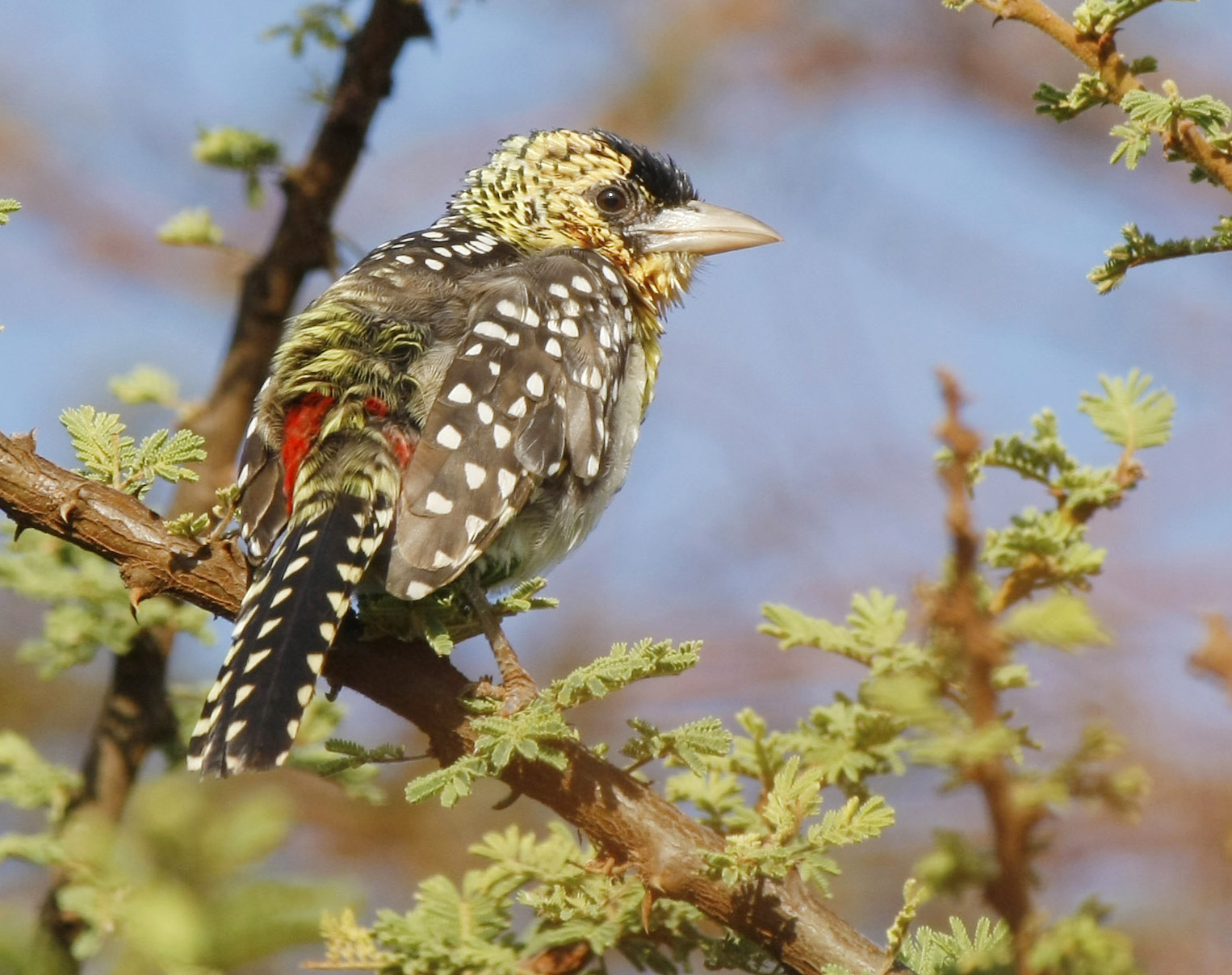
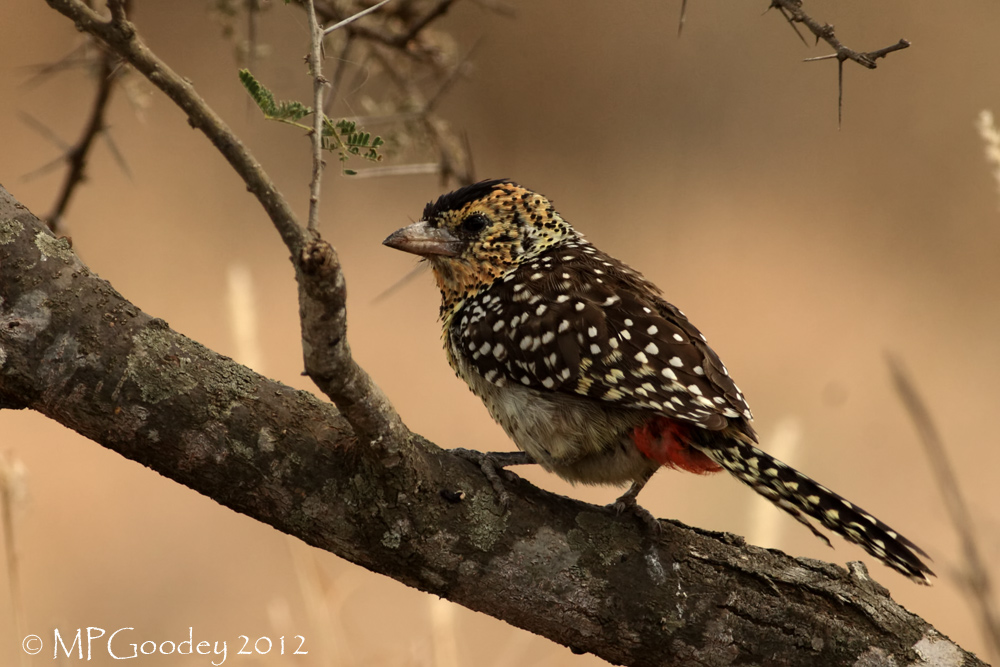
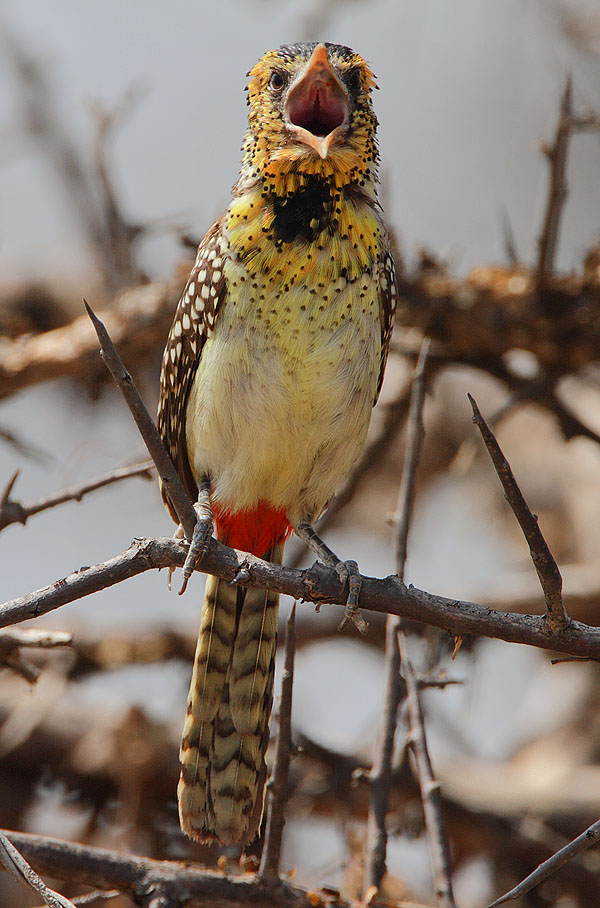
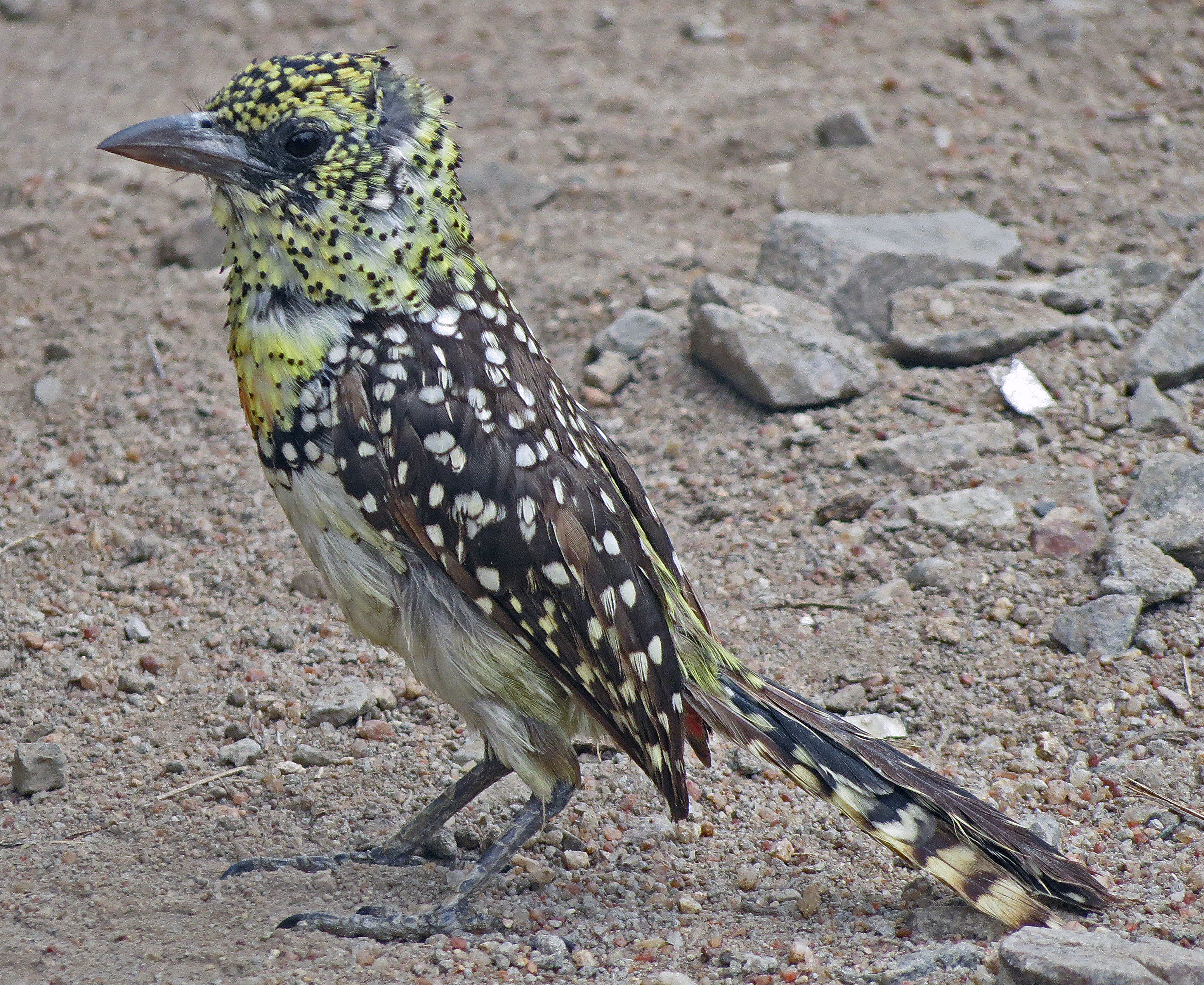
 Animalia Life
Animalia Life